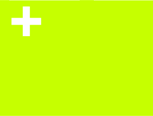selbstporträt als ein anderer
Programme Note
Self-portrait as another person or another person's self-portrait? How do you see yourself? How do others see you, themselves? I mean really how as well as what do you see? How do you want to see yourself? How do you want to be? Like Dorian Gray, do you present a pretty shell covering an ugly heart? Do you want to change?
"Selbst-porträt als ein anderer (bleib ruhig einmal verdammt!)" means "Self-portrait as another [person] (stay calm for once, damn it!)".
OK though, this shouldn't descend into lame pop psychology, sociology or 'self-help', but a recent interesting phenomenon is that of email or chat-room persona, virtual-reality 'avatars' even, where a person may represent themselves through internet technology as something that they are not, or perhaps are, but want to keep secret. It is common to find people who exchange highly insulting messages ("flame wars") whereas in person they are quite timid, harmless; complete misanthropes or social misfits who come across as friendly, well-balanced people; your next-door-neighbour perhaps, who becomes the drooling sex fiend you always knew him to be. Computers allow the adoption of a new character, the realisation of the wildest schizophrenic dreams even, with countless, multiply split personalities; and no-one has to know a thing about it.
But I'll come clean: this piece was developed with my slippery chicken algorithmic composition software. With this, I create (potentially large) musical structures from basic musical material. Don't misunderstand me: I do the composing, not the computer. Every single step the computer takes in generating the structures has been programmed by me. What the software allows, is for me to step outside of myself for a while, to investigate, explore, to see what might be possible were I to use this idea or that idea. I have the possibility to write music that I otherwise might not be able to due to the high complexity of its generation. Central to the concept is also that the same input material creates both instrumental and digital ("tape") music structures so that the two sound worlds are unified, not at odds with each other (unless that is the intention).
In this piece, and for quite some time now, I wanted to change, to eschew my usual loud, aggressive, fast, dense musical character and produce something quiet, slow, rather diffuse. The music is still me though, partly because I failed of course, but also because I still have to bring to full fruition, and react to, the structures offered me by the program; that is, I still have to compose in the traditional sense of the word. But I'm able to present a different aspect of myself, develop a side of my musical character that perhaps lies dormant, dominated, obliterated by its bigger, stronger alter-ego(s).
Thanks to Bill Schottstaedt of CCRMA, Stanford University for the Common
Lisp Music software with which the sounds were processed for this piece;
and to Miller Puckette whose Pure Data software is used for the
real-time sound triggering, mixing and diffusion. This composition was made
possible by the kind support of the ".KUNST Bundeskanzleramt" of the Austrian
government.


